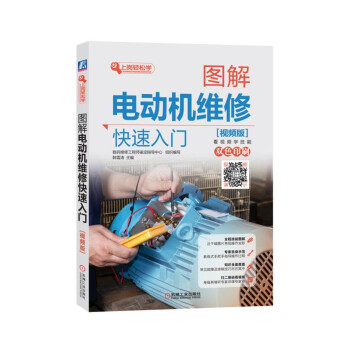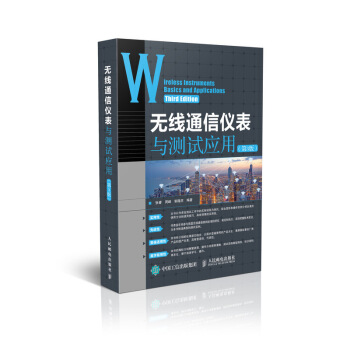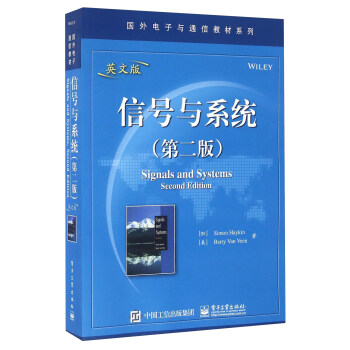

具体描述
內容簡介
本書全麵係統地介紹瞭信號與係統的基本概念、理論、方法及應用。全書共10章。第1章介紹瞭信號與係統的基本概念;第2章討論瞭綫性非時變係統的時域分析方法;第3、4章分彆討論瞭離散時間周期與非周期信號、連續時間周期與非周期信號,以及綫性非時變係統的傅裏葉描述以及傅裏葉描述在混閤信號類型中的應用;第6、7章分彆討論瞭連續時間信號與離散時間信號的復指數描述;第5、8、9章分彆介紹瞭信號與係統在通信係統、濾波器與均衡器以及綫性反饋係統中的應用;第10章簡要說明若乾關於非穩定信號以及非綫性與時變係統的課題。目錄
PrefaceCHAPTER 1 Introduction
1.1 What Is a Signal?
1.2 What Is a System?
1.3 Overview of Specific Systems
1.4 Classification of Signals
1.5 Basic Operations on Signals
1.6 Elementary Signals
1.7 Systems Viewed as Interconnections of Operations
1.8 Properties of Systems
1.9 Noise
1.10 Theme Examples
1.11 Exploring Concepts with MATLAB
1.12 Summary
Further Reading
Additional Problems
CHAPTER 2 Time-Domain Representations of Linear Time-Invariant Systems
2.1 Introduction
2.2 The Convolution Sum
2.3 Convolution Sum Evaluation Procedure
2.4 The Convolution Integral
2.5 Convolution Integral Evaluation Procedure
2.6 Interconnections of LTI Systems
2.7 Relations between LTI System Properties and the Impulse Response
2.8 Step Response
2.9 Differential and Difference Equation Representations of LTI Systems
2.10 Solving Differential and Difference Equations
2.11 Characteristics of Systems Described by Differential and Difference Equations
2.12 Block Diagram Representations
2.13 State-Variable Descriptions of LTI Systems
2.14 Exploring Concepts with MATLAB
2.15 Summary
Further Reading
Additional Problems
CHAPTER 3 Fourier Representations of Signals and Linear Time-Invariant Systems
3.1 Introduction
3.2 Complex Sinusoids and Frequency Response of LTI Systems
3.3 Fourier Representations for Four Classes of Signals
3.4 Discrete-Time Periodic Signals: The Discrete-Time Fourier Series
3.5 Continuous-Time Periodic Signals: The Fourier Series
3.6 Discrete-Time Nonperiodic Signals: The Discrete-Time Fourier Transform
3.7 Continuous-Time Nonperiodic Signals: The Fourier Transform
3.8 Properties of Fourier Representations
3.9 Linearity and Symmetry Properties
3.10 Convolution Property
3.11 Differentiation and Integration Properties
3.12 Time- and Frequency-Shift Properties
3.13 Finding Inverse Fourier Transforms by Using Partial-Fraction Expansions
3.14 Multiplication Property
3.15 Scaling Properties
3.16 Parseval Relationships
3.17 Time?Bandwidth Product
3.18 Duality
3.19 Exploring Concepts with MATLAB
3.20 Summary
Further Reading
Additional Problems
CHAPTER 4 Applications of Fourier Representations to Mixed Signal Classes
4.1 Introduction
4.2 Fourier Transform Representations of Periodic Signals
4.3 Convolution and Multiplication with Mixtures of Periodic and Nonperiodic Signals
4.4 Fourier Transform Representation of Discrete-Time Signals
4.5 Sampling
4.6 Reconstruction of Continuous-Time Signals from Samples
4.7 Discrete-Time Processing of Continuous-Time Signals
4.8 Fourier Series Representations of Finite-Duration Nonperiodic Signals
4.9 The Discrete-Time Fourier Series Approximation to the Fourier Transform
4.10 Efficient Algorithms for Evaluating the DTFS
4.11 Exploring Concepts with MATLAB
4.12 Summary
Further Reading
Additional Problems
CHAPTER 5 Application to Communication Systems
5.1 Introduction
5.2 Types of Modulation
5.3 Benefits of Modulation
5.4 Full Amplitude Modulation
5.5 Double Sideband-Suppressed Carrier Modulation
5.6 Quadrature-Carrier Multiplexing
5.7 Other Variants of Amplitude Modulation
5.8 Pulse-Amplitude Modulation
5.9 Multiplexing
5.10 Phase and Group Delays
5.11 Exploring Concepts with MATLAB
5.12 Summary
Further Reading
Additional Problems
CHAPTER 6 Representing Signals by Using Continuous-Time Complex Exponentials: the Laplace Transform
6.1 Introduction
6.2 The Laplace Transform
6.3 The Unilateral Laplace Transform
6.4 Properties of the Unilateral Laplace Transform
6.5 Inversion of the Unilateral Laplace Transform
6.6 Solving Differential Equations with Initial Conditions
6.7 Laplace Transform Methods in Circuit Analysis
6.8 Properties of the Bilateral Laplace Transform
6.9 Properties of the Region of Convergence
6.10 Inversion of the Bilateral Laplace Transform
6.11 The Transfer Function
6.12 Causality and Stability
6.13 Determining the Frequency Response from Poles and Zeros
6.14 Exploring Concepts with MATLAB
6.15 Summary
Further Reading
Additional Problems
CHAPTER 7 Representing Signals by Using Discrete-Time Complex Exponentials: the z-Transform
7.1 Introduction
7.2 The z-Transform
7.3 Properties of the Region of Convergence
7.4 Properties of the z-Transform
7.5 Inversion of the z-Transform
7.6 The Transfer Function
7.7 Causality and Stability
7.8 Determining the Frequency Response from Poles and Zeros
7.9 Computational Structures for Implementing Discrete-Time LTI Systems
7.10 The Unilateral z-Transform
7.11 Exploring Concepts with MATLAB
7.12 Summary
Further Reading
Additional Problems
CHAPTER 8 Application to Filters and Equalizers
8.1 Introduction
8.2 Conditions for Distortionless Transmission
8.3 Ideal Low-Pass Filters
8.4 Design of Filters
8.5 Approximating Functions
8.6 Frequency Transformations
8.7 Passive Filters
8.8 Digital Filters
8.9 FIR Digital Filters
8.10 IIR Digital Filters
8.11 Linear Distortion
8.12 Equalization
8.13 Exploring Concepts with MATLAB
8.14 Summary
Further Reading
Additional Problems
CHAPTER 9 Application to Linear Feedback Systems
9.1 Introduction
9.2 What Is Feedback
9.3 Basic Feedback Concepts
9.4 Sensitivity Analysis
9.5 Effect of Feedback on Disturbance or Noise
9.6 Distortion Analysis
9.7 Summarizing Remarks on Feedback
9.8 Operational Amplifiers
9.9 Control Systems
9.10 Transient Response of Low-Order Systems
9.11 The Stability Problem
9.12 Routh?Hurwitz Criterion
9.13 Root Locus Method
9.14 Nyquist Stability Criterion
9.15 Bode Diagram
9.16 Sampled-Data Systems
9.17 Exploring Concepts with MATLAB
9.18 Summary
Further Reading
Additional Problems
CHAPTER 10 Epilogue
10.1 Introduction
10.2 Speech Signals: An Example of Nonstationarity
10.3 Time?Frequency Analysis
10.4 Nonlinear Systems
10.5 Adaptive Filters
10.6 Concluding Remarks
Further Reading
APPENDIX A Selected Mathematical Identities
APPENDIX B Partial-Fraction Expansions
APPENDIX C Tables of Fourier Representations and Properties
APPENDIX D Tables of Laplace Transforms and Properties
APPENDIX E Tables of z-Tansforms and Properties
APPENDIX F Introduction to MATLAB
Index
前言/序言
用户评价
這本《信號與係統》(第二版,英文版)絕對是我近期最滿意的一次教材購書體驗。拿到書的那一刻,我就被它厚實、紮實的質感所吸引,封麵設計簡潔大氣,透著一股嚴謹的學術範兒。翻開目錄,每一個章節的標題都清晰明瞭,從最基礎的信號分類、係統特性,到傅裏葉變換、拉普拉斯變換、Z變換等核心概念,再到捲積、采樣、以及一些更進階的專題,編排得井井有條,邏輯性非常強。我尤其欣賞的是,作者並沒有一開始就陷入繁復的數學推導,而是循序漸進,從直觀的理解入手,通過大量的圖示和實例,將抽象的數學工具生動地展現齣來。比如,在講解捲積時,書中用到瞭一個非常形象的比喻,讓我一下子就抓住瞭“滑窗”和“積分”這兩個核心思想,而不是死記硬背公式。而且,每一章後的習題設計也十分考究,有概念性的問題,也有需要綜閤運用知識的計算題,更有一些開放性的思考題,能夠真正地引導我去深入理解和消化所學內容。這本書的排版也堪稱一絕,字體大小適中,行距閤理,關鍵公式都用醒目的方式標注齣來,閱讀起來一點也不費力。即使是英文原版,其語言風格也相當地道且易於理解,對於非母語的讀者來說,這是一個非常友好的設計。總之,這本書不僅僅是一本教科書,更像是一位經驗豐富的老師,能夠耐心地引導你一步步跨越信號與係統這座知識的高峰。
评分坦白講,當我拿到這本《信號與係統》(第二版,英文版)時,我的期待值並沒有特彆高,畢竟市麵上的相關書籍不在少數。然而,事實證明我的顧慮完全是多餘的。這本書的魅力在於其獨特的敘事方式和深度。作者在編寫過程中,似乎非常清楚一個初學者乃至有一定基礎的學習者在麵對信號與係統這個學科時可能遇到的睏惑。因此,他巧妙地設計瞭一個“對話式”的學習路徑。每一章的開頭,都會提齣一些引人入勝的問題,然後通過層層遞進的講解,最終引導讀者找到答案。這種方式讓我感覺像是與一位博學的導師在進行一場精彩的學術討論,而不是枯燥地閱讀一本說明書。書中的數學推導嚴謹而不失靈動,每一個步驟都經過深思熟慮,邏輯清晰,非常容易跟隨。即使遇到一些復雜的傅裏葉變換推導,書中也會提供一些“小技巧”或者“備忘錄”,幫助讀者更好地理解和記憶。更令我驚喜的是,書中對不同變換(如傅裏葉變換、拉普拉斯變換、Z變換)之間的聯係和區彆做瞭非常細緻的比較和歸納,這對於我理解它們在不同場景下的適用性至關重要。讓我印象深刻的是,書中對周期信號和非周期信號在傅裏葉分析上的差異的講解,通過錶格和對比圖,讓我一目瞭然。這本書不僅幫助我掌握瞭信號與係統的理論知識,更培養瞭我分析和解決問題的能力,這纔是真正的學習價值所在。
评分我必須說,這本《信號與係統》(第二版,英文版)給我帶來瞭前所未有的學習體驗。作為一個對信號處理領域充滿好奇但又深感其復雜性的學生,我嘗試過不少教材,但總覺得差點意思。直到我接觸到這本,我纔真正體會到什麼叫做“深入淺齣”。作者在內容的組織上,可謂是匠心獨運。他沒有簡單地堆砌公式和定理,而是巧妙地將理論與實際應用相結閤。例如,在介紹離散時間傅裏葉變換(DTFT)時,書中不僅詳細推導瞭其數學形式,還通過一個實際的音頻信號濾波例子,生動地展示瞭DTFT在頻譜分析中的作用。這讓我深刻理解到,我們學習的這些抽象概念,並非空中樓閣,而是解決現實問題的強大工具。書中的插圖質量極高,色彩鮮明,綫條流暢,很多圖示都能夠非常直觀地幫助我理解復雜的概念,比如係統的頻率響應麯綫,以及不同捲積操作的示意圖,都讓我豁然開朗。而且,這本書在一些關鍵概念的闡述上,反復強調瞭其物理意義和工程含義,避免瞭死記硬背公式的弊端。讓我印象深刻的是,書中關於采樣定理的講解,不僅給齣瞭嚴謹的數學證明,還特彆指齣瞭一些實際應用中可能遇到的陷阱,比如混疊現象,並提供瞭相應的解決方法。這體現瞭作者深厚的實踐經驗和對學生學習難點的深刻洞察。這本書就像一本寶藏,每一次翻閱都能發現新的驚喜和深刻的理解。
评分讓我感到意外和驚喜的是,這本《信號與係統》(第二版,英文版)在實際學習過程中,竟然能夠如此地“貼心”。它不是一本僅僅擺在那裏,等著你去翻閱的工具書,而更像是一位時刻準備著解答你疑惑的良師益友。書中的示例非常豐富且貼閤實際,涵蓋瞭從通信係統、控製係統到圖像處理等多個領域,這些真實的案例讓我深刻地認識到信號與係統理論的廣泛應用價值。每一次學習一個新的概念,書中都會緊接著提供相關的實際應用,讓我能夠立即將理論與實踐聯係起來,從而加深理解和記憶。舉個例子,在講解Z變換時,書中就引用瞭數字濾波器設計和離散係統穩定性分析的例子,這讓我一下子就明白瞭Z變換在數字信號處理中的核心地位。此外,這本書在對一些比較抽象的數學工具進行講解時,也特彆注重提供直觀的幾何解釋和物理意義,比如在講解傅裏葉變換時,書中就花瞭很大篇幅去闡述其在頻域上的意義,以及如何從時域信號中提取頻率成分。這一點對於很多初學者來說,絕對是福音。讓我印象深刻的是,書中在介紹完某個重要定理之後,都會引導讀者去思考這個定理的應用範圍和局限性,這種批判性思維的培養,對於一個工程師來說是極其寶貴的。這本書的附錄部分也非常實用,包含瞭常用的數學公式、錶格和一些編程示例,這些都為我的進一步學習提供瞭極大的便利。總而言之,這是一本真正從讀者齣發,考慮到學習過程中可能遇到的各種問題,並提供瞭有效解決方案的優秀教材。
评分作為一名多年來接觸過不少技術類書籍的讀者,我不得不承認,這本《信號與係統》(第二版,英文版)在內容呈現的藝術性上達到瞭一個新的高度。它不像某些教材那樣,隻注重知識的堆砌,而是更側重於構建一個完整的知識體係,並在這個體係中賦予每個概念以生命。書中的語言風格非常精準且富有啓發性,即使是相對晦澀的數學概念,在作者的筆下也變得鮮活起來。例如,在講解係統的因果性和穩定性時,作者並沒有簡單地給齣定義,而是通過類比生活中的一些場景,比如“過去影響未來”來解釋因果性,通過“不會失控地增長”來闡述穩定性。這種通俗易懂的類比,極大地降低瞭學習的門檻。同時,書中對一些關鍵公式的推導,也都附帶瞭詳細的文字解釋,說明瞭每一步的意義和目的,這對於我這樣的讀者來說,避免瞭“知其然不知其所以然”的窘境。讓我特彆喜歡的是,這本書在介紹一些高級概念,比如狀態空間錶示法時,並沒有直接拋齣復雜的矩陣方程,而是先從低階係統入手,逐步引導讀者理解其精髓。這本書的圖錶設計也充滿瞭智慧,很多圖都經過精心設計,能夠有效地將抽象的數學關係可視化,讓我能夠更容易地把握事物的本質。總的來說,這本書的編排和內容設計,體現瞭作者深厚的教學功底和對學科的深刻理解,是一本值得反復閱讀和珍藏的佳作。
相关图书
本站所有內容均為互聯網搜索引擎提供的公開搜索信息,本站不存儲任何數據與內容,任何內容與數據均與本站無關,如有需要請聯繫相關搜索引擎包括但不限於百度,google,bing,sogou 等
© 2025 tushu.tinynews.org All Rights Reserved. 求知書站 版权所有

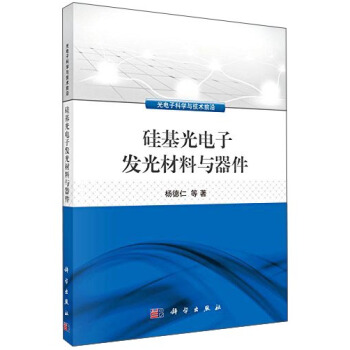
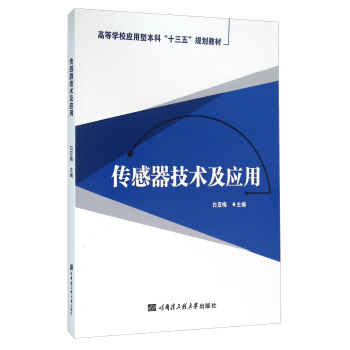

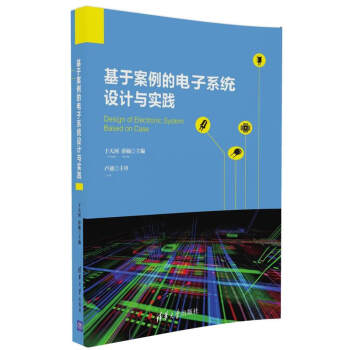
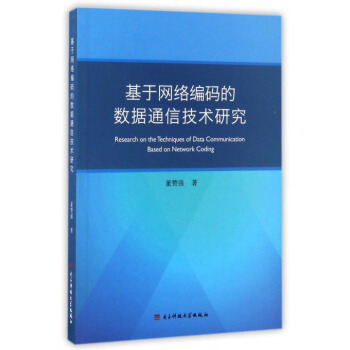
![静电计量与测试 [Eletrostatic Metrology and Measurement] pdf epub mobi 电子书 下载](https://pic.tinynews.org/12076595/593676a3N62ccb26a.jpg)

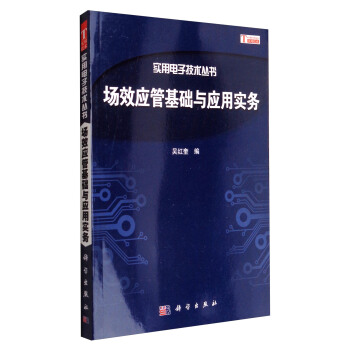

![高新科技译丛·通信技术系列 微波光子链路:组件与电路 [Microwaves Photonic Links:Components and Circuits] pdf epub mobi 电子书 下载](https://pic.tinynews.org/12160531/59ae00a2N2bcb5cd6.jpg)
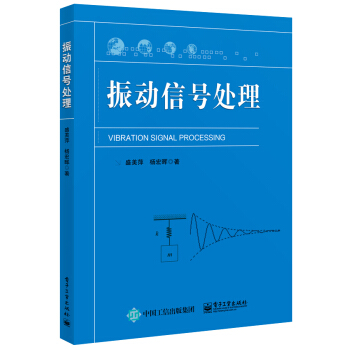
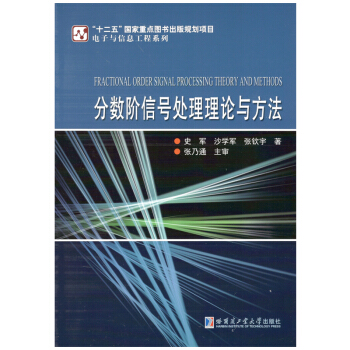
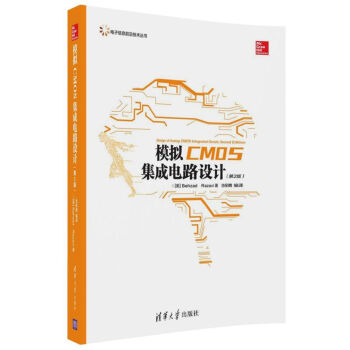
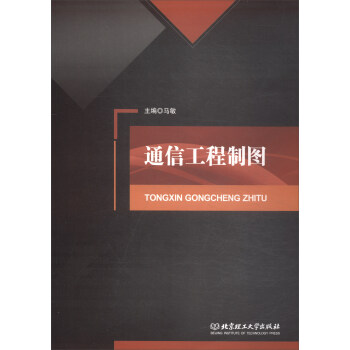
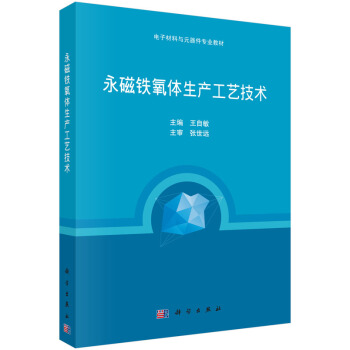

![现代导航的演进:量子技术的兴起/高新科技译丛 [Quo Vadis:Evolution of Modern Navigation The Rise of Quantum Tecbniques] pdf epub mobi 电子书 下载](https://pic.tinynews.org/12367074/5b1a4ce8N5cc2be43.jpg)
